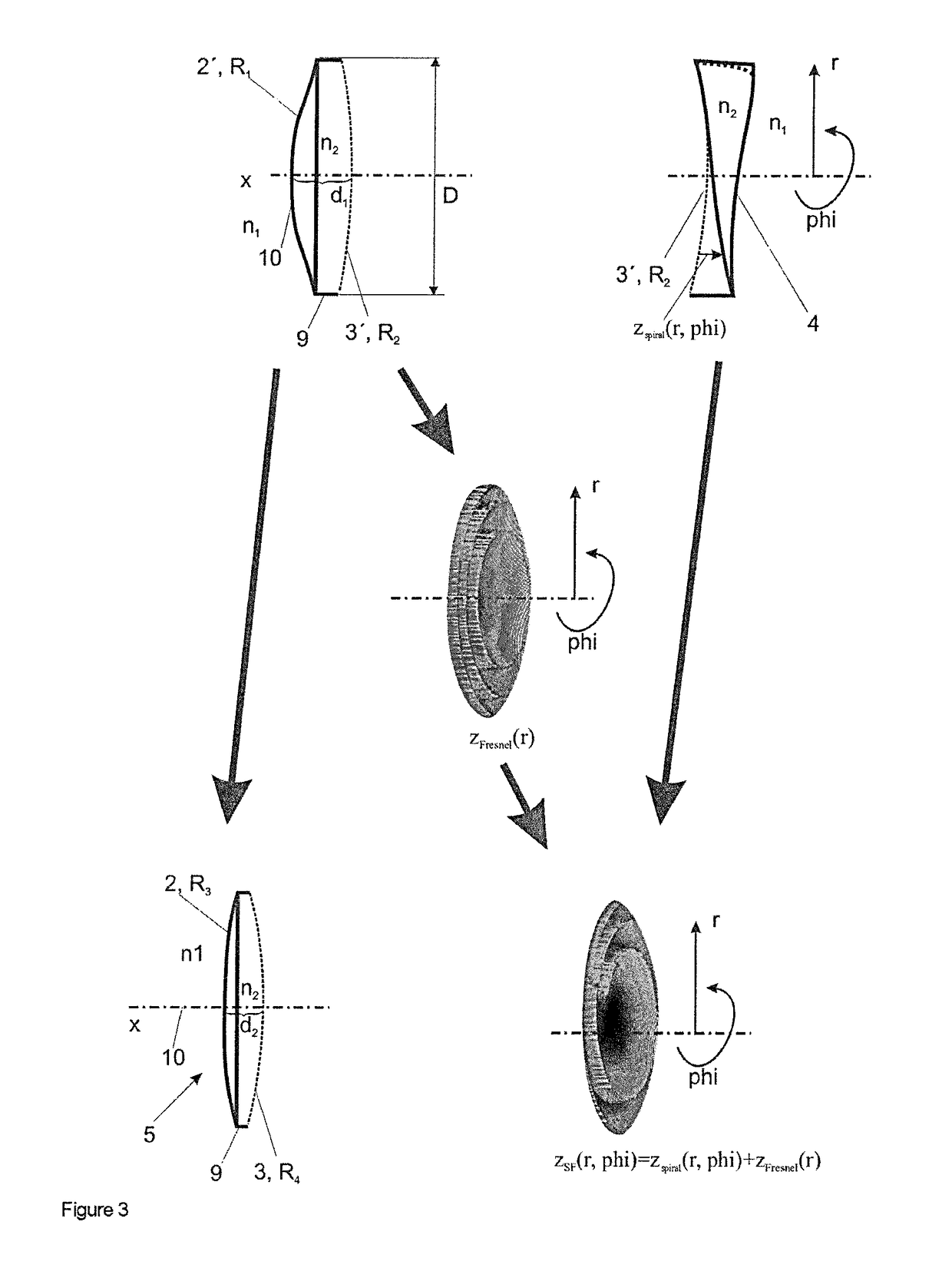Lens having an extended range of focus and method of making the same
a technology of extended range of focus and lens, applied in the field of lenses, can solve the problems of strong radius curvature, and achieve the effects of large depth of field range, extended focus range, and good imaging quality
- Summary
- Abstract
- Description
- Claims
- Application Information
AI Technical Summary
Benefits of technology
Problems solved by technology
Method used
Image
Examples
Embodiment Construction
[0121]FIG. 1 shows a “thick” lens 1 having an extended range of focus as disclosed in DE 10 2011 101 899 A1, the content of which is incorporated by reference. Shown is a side view with a depiction of the spiral refractive height profile zspiral(r, phi), which produces the spiral focal power distribution Fspiral(r, phi). This lens 1 is initially determined by its base system with the radius R1 of the first optical surface 2′ and the radius R2 for the calculated base surface 3′, and also by the lens thickness d1 and the refractive index n2. These parameters are determined for an envisaged basic magnification. An additional material thickness z is “added” to the calculated shape of the base surface 3′ with the radius R2, with the additional material thickness being z=0 mm at phi=0, then increasing continuously and having a maximum value in the millimeter range at phi=2π. In practice, the maximum value will lie slightly in front of the azimuth angle phi=2π in order to realize a continu...
PUM
 Login to View More
Login to View More Abstract
Description
Claims
Application Information
 Login to View More
Login to View More - R&D
- Intellectual Property
- Life Sciences
- Materials
- Tech Scout
- Unparalleled Data Quality
- Higher Quality Content
- 60% Fewer Hallucinations
Browse by: Latest US Patents, China's latest patents, Technical Efficacy Thesaurus, Application Domain, Technology Topic, Popular Technical Reports.
© 2025 PatSnap. All rights reserved.Legal|Privacy policy|Modern Slavery Act Transparency Statement|Sitemap|About US| Contact US: help@patsnap.com



